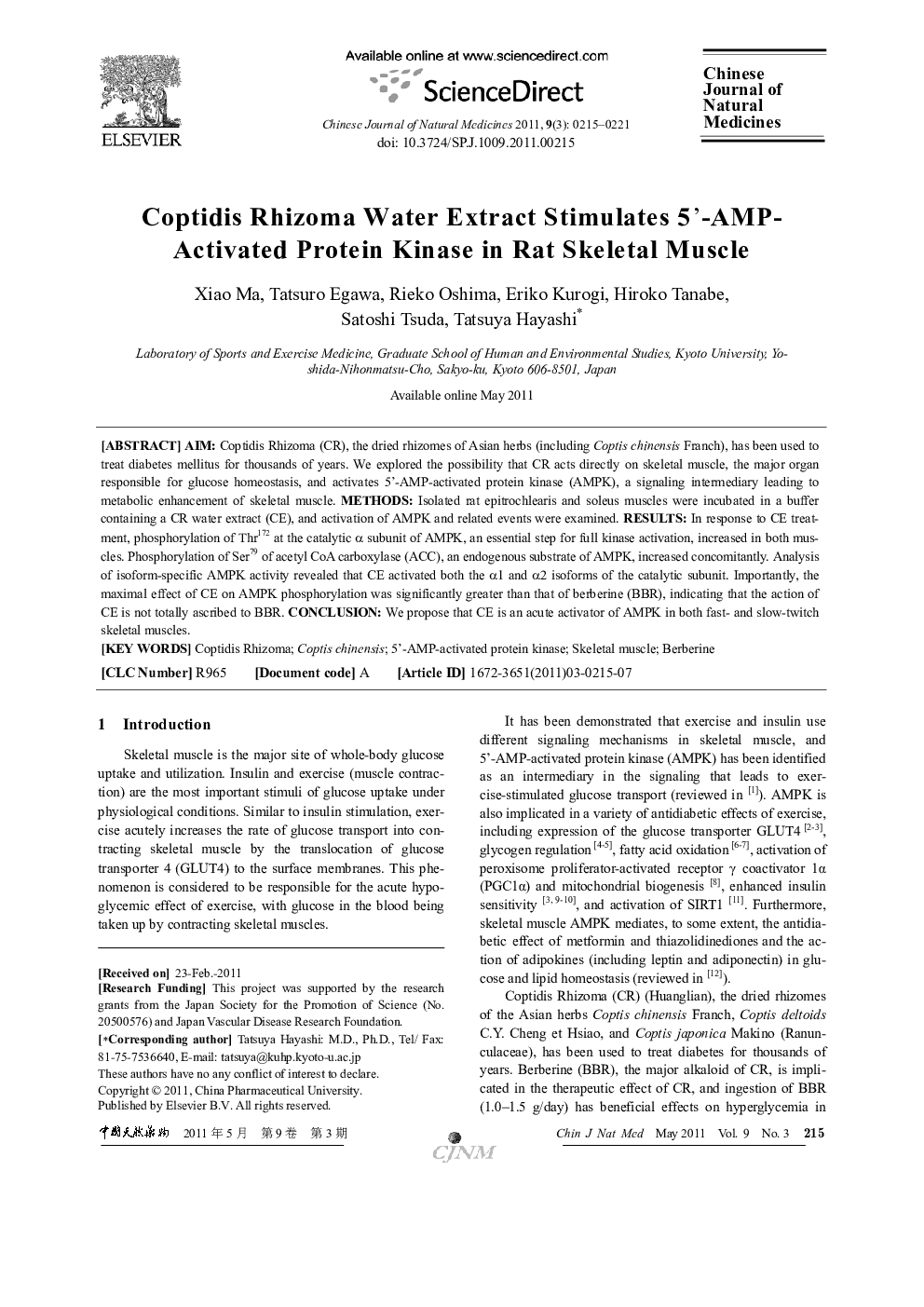| Article ID | Journal | Published Year | Pages | File Type |
|---|---|---|---|---|
| 2526654 | Chinese Journal of Natural Medicines | 2011 | 7 Pages |
AimCoptidis Rhizoma (CR), the dried rhizomes of Asian herbs (including Coptis chinensis Franch), has been used to treat diabetes mellitus for thousands of years. We explored the possibility that CR acts directly on skeletal muscle, the major organ responsible for glucose homeostasis, and activates 5′-AMP-activated protein kinase (AMPK), a signaling intermediary leading to metabolic enhancement of skeletal muscle.MethodsIsolated rat epitrochlearis and soleus muscles were incubated in a buffer containing a CR water extract (CE), and activation of AMPK and related events were examined.ResultsIn response to CE treatment, phosphorylation of Thr172 at the catalytic α subunit of AMPK, an essential step for full kinase activation, increased in both muscles. Phosphorylation of Ser79 of acetyl CoA carboxylase (ACC), an endogenous substrate of AMPK, increased concomitantly. Analysis of isoform-specific AMPK activity revealed that CE activated both the α1 and α2 isoforms of the catalytic subunit. Importantly, the maximal effect of CE on AMPK phosphorylation was significantly greater than that of berberine (BBR), indicating that the action of CE is not totally ascribed to BBR.ConclusionWe propose that CE is an acute activator of AMPK in both fast- and slow-twitch skeletal muscles.
